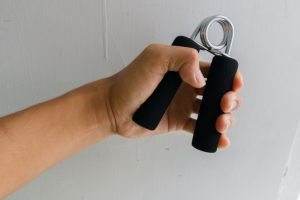 Grip strength is more important than you give it credit for. But it can prevent falls, contribute to independence, and potentially play a role in brain health.
Grip strength is more important than you give it credit for. But it can prevent falls, contribute to independence, and potentially play a role in brain health.
Being able to solidly grip handrails, shopping bags, and more can all contribute to a higher quality of life and make you safer and more independent. But grip strength, like other forms of strength, decreases with age.
Advertisement
Exercising your wrist, hands, and forearms can help prevent major reductions in grip strength to help you maintain a higher quality of life and perform activities that allow you to retain freedom.
Here are a few ways to build and maintain your grip:Stress Balls: One of the easiest ways to start building grip strength is using a stress ball. Grab it in one hand and squeeze it as hard as you can for three seconds, then release. Do that ten times and switch hands. Once that’s too easy, work your way up to a tennis ball, then to a racquetball. You can also increase the amount of time you squeeze the balls.
Grip Strengtheners: You can also use this piece of exercise equipment to build grip strength. These little triangle-shaped tools provide resistance to squeezing and come with various resistance levels. They can be done while sitting on the sofa and are easily portable.
Dumbbells: Dumbells can also help build grip strength. Both standard and hammer grips can help strengthen forearm muscles, with the hammer grip being slightly superior. To perform it, simply hold the dumbbell perpendicular to the floor (like a hammer).
Pick a weight where you can do 8-12 repetitions per arm. Do three or four sets of 8-12 with each arm, alternating.
A stronger grip can help you age better and reduce the risk of falls and disability.
